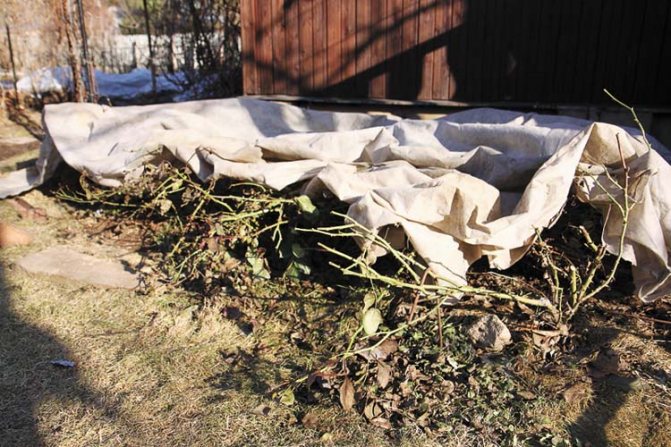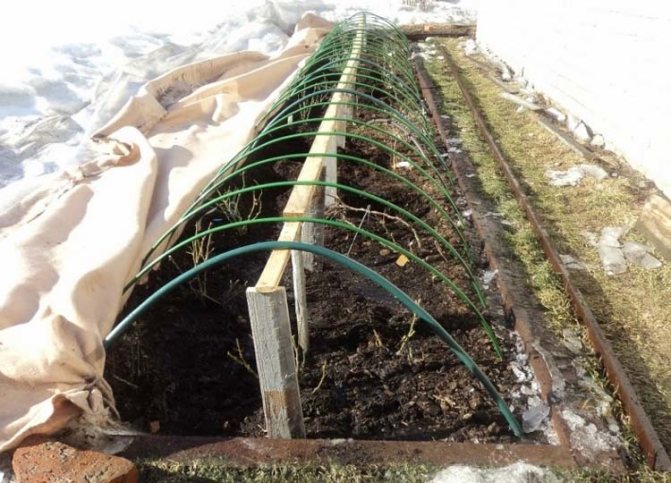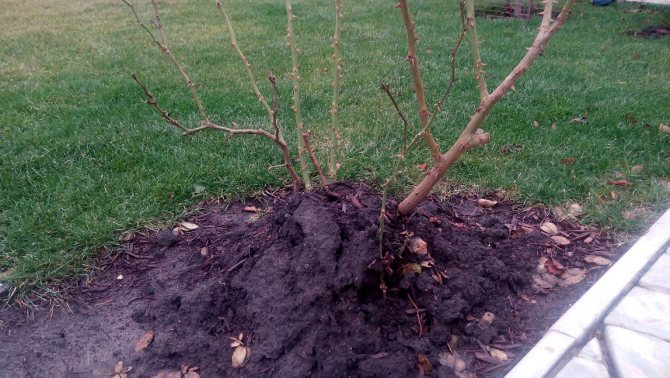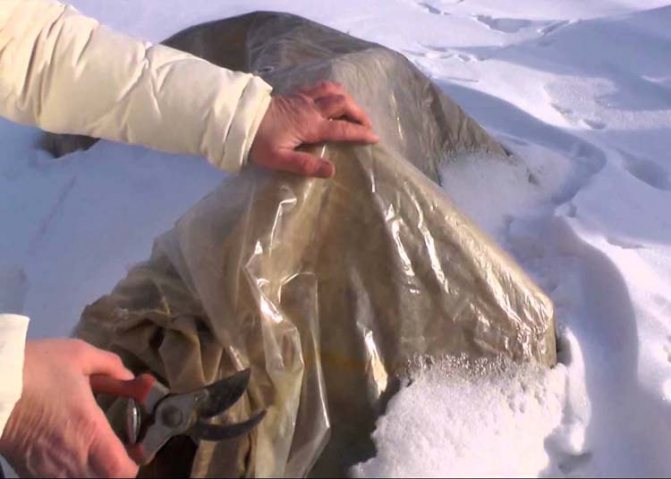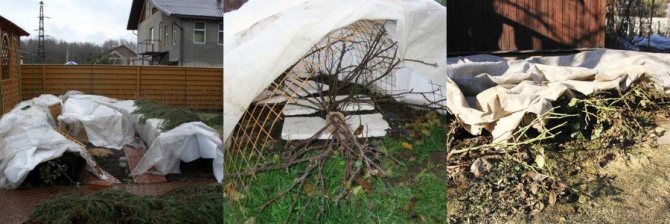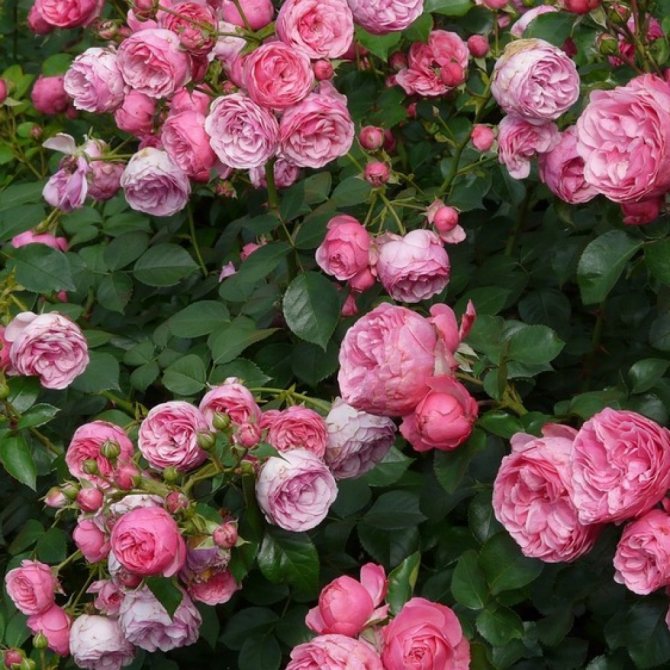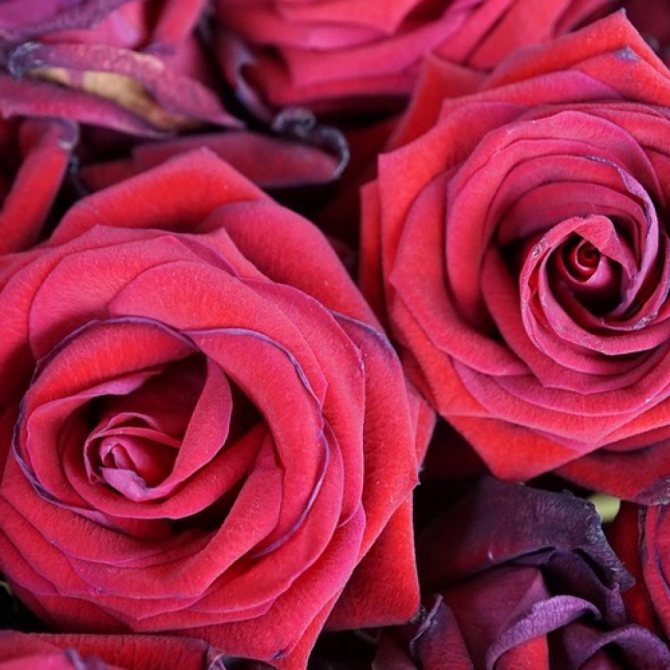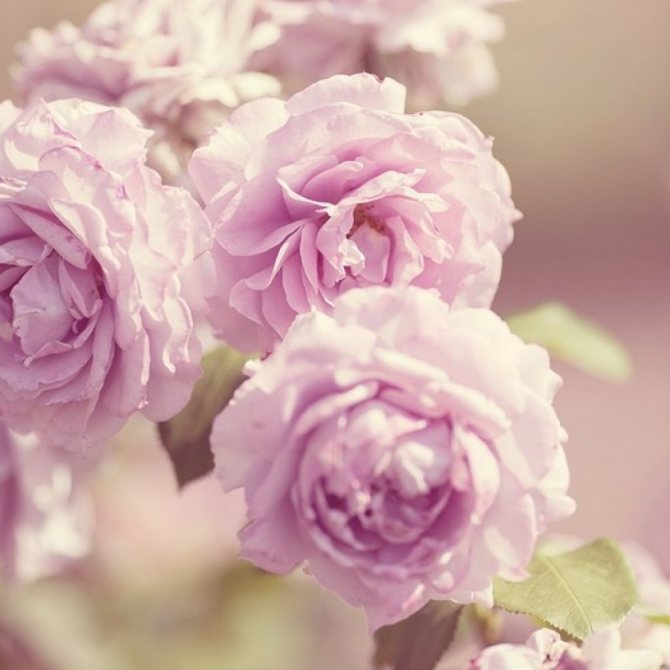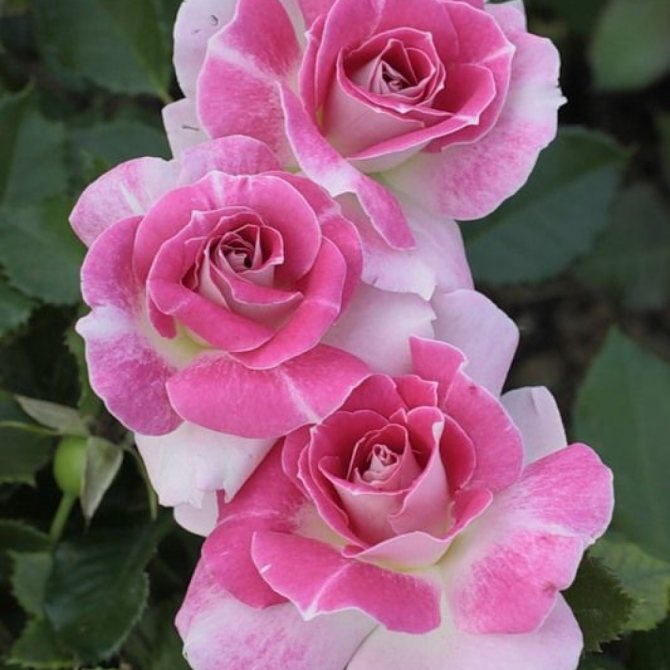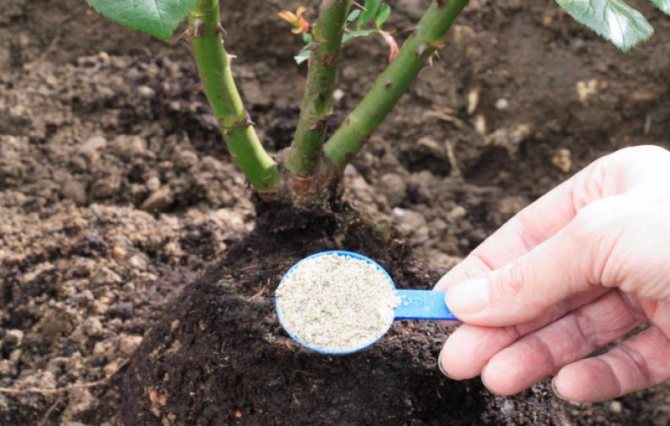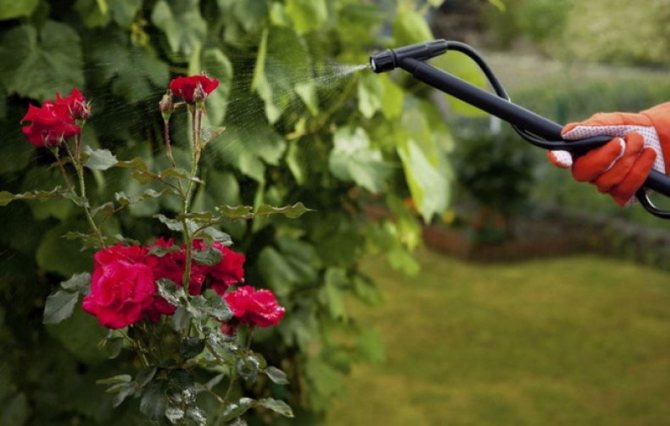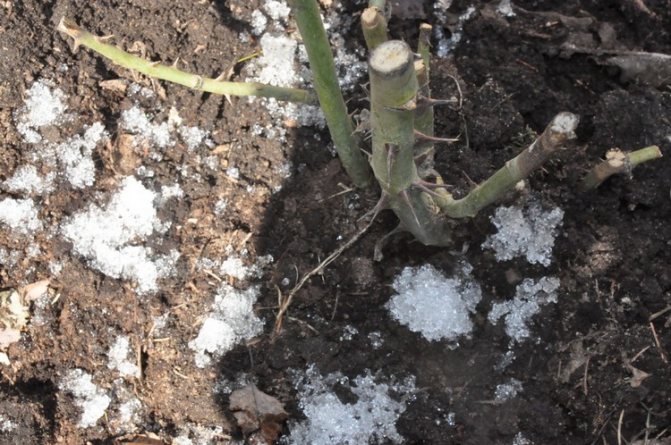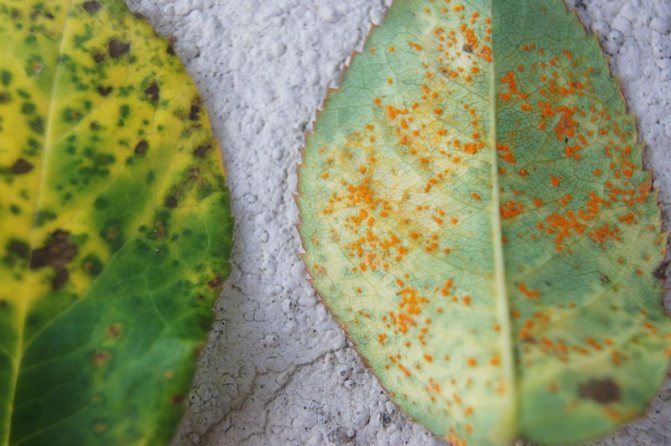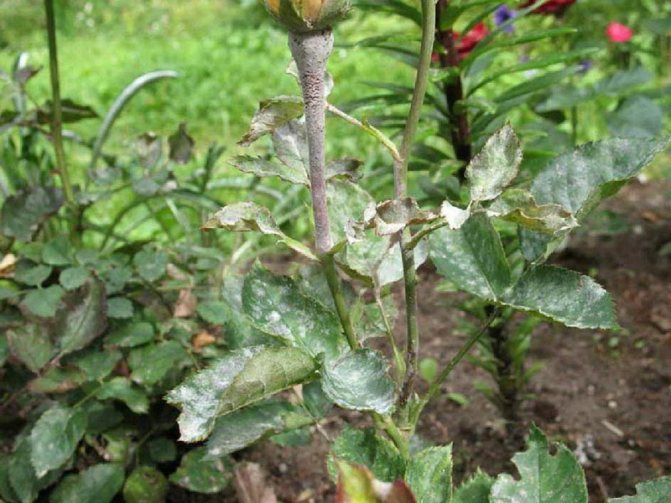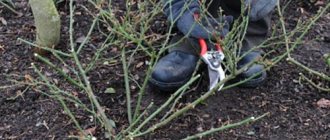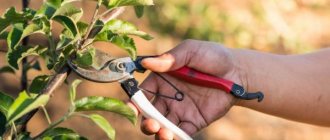And now spring has come, which means it's time to start looking after your garden after winter. Naturally, it is very important to pay attention to the queen of your garden. So the timely opening of roses in spring is the first procedure included in the spring rose care measures.
What further care will the roses need after opening?
- How to trim them correctly?
- How to feed and process roses in spring after opening?
- What about watering, loosening and mulching?
You will learn further from this material about these and other important activities that must be performed with roses in spring.
Opening roses for the first time
In the Moscow region, we open roses for initial inspection in late March-early April, if the snow has completely melted on the shelters. The sooner the cover is removed, the better.

Opening the roses, you can see the "snow mold" on the roses after winter - the stems seem to be wrapped in a cobweb, dirty white cloth. This is not scary: it lives only under the snow and will quickly disappear when opened.
After removing the cover, you can see that some of the shoots are partially or completely blackened. It's okay, after pruning all the blackened and broken branches to healthy tissue, the roses will give new shoots. Pruning should be done as soon as possible. You also need to remove all the remaining last year's leaves and uncook the roses.
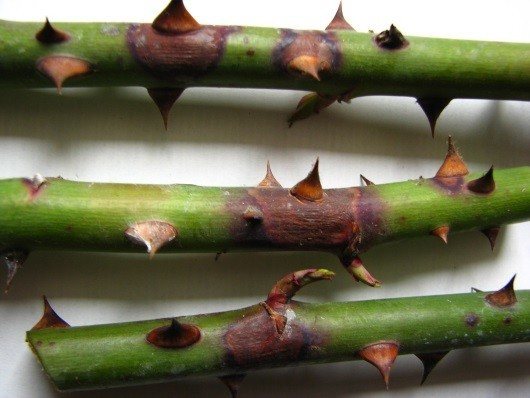

On some branches of roses, after removing the cover, you can see bright crimson or dark brown spots. It looks like an infectious burn that spreads on roses under cover. Such branches also need to be trimmed to a healthy light tissue. Slices must be processed with Ranet or brilliant green. Sometimes it is necessary to remove branches completely to the grafting site, without leaving hemp. Nothing can be done, the whole bush must be secured. And the rose will give new shoots from the buds of renewal.
Output
There are thousands of species of this royal flower and each has its own preferences for light, moisture, soil. Knowing how to grow the queen of flowers, we will successfully take care of her prosperous existence in our country house.
It is spectacular in the center of emerald greenery. Also beautiful is the mysterious gazebo entwined with roses, or the flowering arch from the gate to the house. The video in this article will share with us information about beautiful and peculiar roses.
Roses are beautiful and very moody plants. Flowers require special conditions for their growth and development. Roses in their summer cottage need a special planting site, special soil, careful care. When growing roses in the country, the location and land for flowers are important.
Rose processing after winter
Experienced gardeners recommend, after pruning, treat all roses with copper-containing preparations (Bordeaux mixture, 1% copper sulfate solution: 100 g per 10 liters of water, HOM, Oxyhom). If you do not use chemistry in your garden, then you need to treat the bushes and the soil around them with at least phytosporin (a drug for any bacterial infections and rot).


If the shoots have cracks, frost holes and breaks in the bark, then it is recommended that these branches be immediately cut into a ring. I do not recommend treating them: in the fall they will still have to be cut out, the second time they will not overwinter.And since the rose devoted a lot of energy to treatment (if you leave a diseased shoot), it did not really form good new shoots, then you can end up with a weak bush and there is a high probability of losing the rose in the coming winter. Therefore, it is better to immediately cut out diseased branches so that the rose has time to grow young healthy, developed shoots during the garden season.
So, after the roses have been opened, trimmed, processed, they need to be closed again. But you need to close it with one thin layer of covering material, leaving the ends of the shelter open. It is imperative to close the roses again, because if they are left open, and the ground is still frozen at this moment, the roots of the bushes are not working, the roses may die from drying out in the bright sun and winds.
Careful selection of rose varieties
The variety of species and varieties allows you to make a good choice in order to perfectly diversify the landscape design of the site. The main types of roses - tea-hybrid, polyanthus, climbing, floribunda... Particularly noteworthy are miniature plants. Each species has its own needs.
There are a lot of varieties of flowers. Every year, new, even more spectacular plants of different colors appear - from almost black to snow-white. There are two- and three-color roses. Depending on the selection of varieties, a summer cottage or garden can be romantic, festive, calm, of the correct form.
How to open roses correctly
Why should the opening of a rose in the spring be done somehow in a special way, and not take off the shelter, and let it warm itself? There are several reasons for the prolonged release of the shrub into fresh air. 1. With a sharp drop of the shelter with the arrival of the first heat, there is a high probability of planting death during spring frosts. 2. If you wait out the cold, but tighten with the procedure, the roses closed in the warmth will dry out at high humidity. In order not to freeze anything, starting work too early, or not to ruin it, having overexposed more under cover, the bush is opened according to the rules that have been worked out for centuries. First. In the month of March, if there is still a lot of snow, but the sun is already warming up, and the tops of the shelter begin to melt, the thawed patches are again covered with snow. As long as the ground is frozen, it should be cold inside. And then, as it were, the above-ground part of the plant, having felt the warmth, due to the internal reserves of nutrients, did not grow with frozen roots. In a few days, the rose will no longer need to be opened, it will die. Second. If there is a lot of heat and quickly, the snow melts instantly, and the ground does not thaw as quickly as desired, ash is sprayed around the “pink” snowdrifts to speed up the process.
Third. During a long and snowy winter, shelters and the surrounding area are cleared of snow in April. The bushes should not overwinter more than they should. Fourth. With the beginning of the general thawing, channels are “laid” near the shelters to drain the melt water. Fifth. On the same days, to remove excess moisture, the ends of the shelters begin to open for 1 hour in the afternoon, then close, but not tightly. Sixth. A few days later, for more ventilation, the lateral leeward side is opened in the same way. Seventh. When the temperature rises to + 15 ° C and above, the cover is removed completely. For a rose, it is good if the day is without rain, but cloudy. In the sun, shoots that have wintered in the dark will be burned. Eighth. As soon as the opening of the roses in the spring has come to pass, planting for a week or two is determined in the shade, covering them with agrofibre, in extreme cases, spruce branches. The benefits of the procedure are twofold: the shoots will get used to the new conditions, plus protection from possible frosts. After the establishment of real spring weather, all unnecessary things are removed from the bushes, the climbing roses are tied up, a complete audit is carried out and the following procedures are started.
Where to plant a rose: favorable climate and temperature
Roses love everything in moderation: they cannot stand the heat and severe frosts, they cannot without abundant watering, but waterlogging harms them.The ideal condition for the good development of roses is considered to be a temperature of up to 25 degrees in summer. They should be planted in a sunny area, preferably protected from the winds.


Caring for the rose after opening
Immediately after winter, dry, sick, with frost and diaper rash shoots are a pitiful sight. To put the "economy" in order, all the shortcomings will have to be corrected. First of all, the earth is leveled under the spudded roses. The root collar is treated well with a pink solution of potassium permanganate, after half an hour with a 1% solution of copper sulfate. If the root collar is puffed up and the bark has peeled off, the bark is removed, the clean wood is disinfected again, wrapped with electrical tape. Roses cut in autumn are sanitized, uncircumcised undersized and climbing plants are pruned in full. Frostholes are cracks of the bark wet from autumn and frozen in winter. Damage in the upper part of the shoot is treated. First, it is disinfected with a 1% solution of copper sulfate, then treated with RanNet paste or garden varnish. Stems with frostbites closer to the root collar are removed completely. Mold - until it has spread throughout the bush, do not worry. Small lesions are washed off, again, well with a pink solution of potassium permanganate, dried, treated with copper sulfate of 1% concentration. Diaper rash - without due attention to the rose in early spring, there are often. They arise from too early shelter of plantings in the fall, late or incorrect opening in the spring. They appear as ring spots on the shoots. If small areas are affected, the shoot can be tried to heal by cutting the ring to fresh wood and treating the cut with garden pitch. Stems with large diaper rash are removed. The next stage is the spring feeding of the rose, without which all previous and future events, if they do not lose their meaning, then there will be little sense from them. Without the necessary amount of nutrients and minerals, a bush weakened in winter is unlikely to make sense. Finally, the bushes prepared for the upcoming season will have to be treated for diseases and pests. Rather, they spray not only the bushes, but also the land, in which, after winter, various harmful animals are always present.
Complementary feeding and pest control
Regardless of the variety, the rose needs harmonious nutrition: it is impossible not to feed it, but overfeeding also harms it. After planting, you should be careful with complementary foods - 2 times a summer in small doses is enough. In the second year, you can get down to business thoroughly. Basic fertilizers and the effect they produce:
- Nitrogen provides accelerated growth and promotes flowering, therefore, it is applied to the soil in May.
- Phosphorus strengthens the shoots and allows the roses to bloom more often and the buds to be larger. The feeding period lasts from June to September.
- Calcium leaches the soil, creating conditions for the development of beneficial bacteria.
- Potassium influences bud formation, subsequent flowering and helps to withstand cold winters. It is introduced into the soil from early summer to mid-autumn.
- Trace elements increase the protective properties of the plant, therefore, the plant needs the entire growing season.
Roses with good immunity will withstand the invasion of pests, but they must be helped. Insecticide treatments in the midst of control and prophylactic purposes are effective. You need to know pests of garden plants dangerous for roses by sight!
In the fall, for prevention, dig up the soil and treat it with a solution of ordinary potassium permanganate. Pay attention to your beauties, attract beneficial insects to the site and avoid threats.
When to remove rose cover in different regions
When to open roses after winter in the Moscow region
The middle zone is an area with an ambiguous climate. In some years or even months, the weather may be like in the south, but a little time has passed, and it got colder for a long time.All this means that hardly anyone will be able to clearly answer the question of when to open roses in the spring in the Moscow region. I mean, at least in what week of the month. If approximately in numbers yes with ideal weather, preparations for removing the shelter begin in the first half of March, the procedure itself is carried out starting from the end of March with the transition to the first half of April. But again, this is theory. In practice, it is customary to focus on the weather in a particular year. You can start opening the rose, provided that the air temperature during the day is above + 15 ° C, at night - not below + 2 ° C. In this case, the soil should be warmed up to a depth of about 20 cm, if it is simpler - the blade of the shovel freely goes into the ground to the end. For whom folk methods of determining the exact time of the start of work are more suitable, you can also be guided by them. They say that young leaves on a birch 2 centimeters in size are a sure sign that a sharp cold snap and freezing no longer threaten the bushes.
When to open roses in the Moscow region: video
When to take shelter from a rose in "problem" regions
The difficult climate of the Leningrad Region and the even more difficult Urals and Siberia constantly creates problems for the grower. Each year it is necessary to decide, or when to cover for the winter, or when to open roses in the spring with the condition of their complete preservation. But it seems from afar that there are more problems with late opening and early wintering. In place, everything is almost the same as in the middle lane, but with a slight adjustment for local conditions. Yes, and those amendments are few. First. If you focus on numbers, the bushes are opened a little later. In the Leningrad region, towards the end of April - beginning of May. In Siberia and the Urals, the rose is released at the end of May or at the beginning of June. The timing, of course, is approximate, so as not to miscalculate, they look at the weather. Second. After the "big" winter, they do not wait until the snow melts on the shelters, at the end of April they begin to clean up. Third. During the airing of the landings, the slots in the shelters are not left at night, everything is covered as it was. After removing the shelter, in addition to protecting the landings from the sun, protection from the wind may be required, but this is according to the situation. Further care for the bushes is the same as in the Moscow region.
When to open roses after wintering in the Urals: video
That's all, the problem of opening a rose in spring is solved. In terms of time, the process may not be quite fast, but without negative consequences. If you do not rush and follow in step with nature, the shrub will not suffer, it will enter the summer healthy and prepared.
Top dressing
In order for roses to grow immediately after wintering, they need recharge.
Important! If you originally planted roses in a fertile and well-fertilized planting pit, then the first feeding should be done only after 2-3 years.
As a rule, roses are fed in spring, summer and autumn according to the following scheme:
- Immediately after taking off the shelter, spring pruning and processing - nitrogen fertilizer (ammonium nitrate).
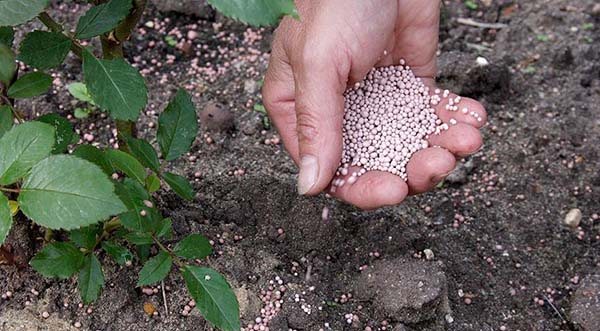

- With the beginning of shoot growth and leaf blooming (10-14 days after the first feeding) - complex mineral fertilizer (nitrogen, phosphorus, potassium - approximately equally, such as nitroammofoska).
- During the budding period - complex mineral fertilizer (less nitrogen, more phosphorus and potassium, as an option, potassium sulfate + superphosphate or just potassium monophosphate).
- After the first flowering (in summer, around July) - complex mineral fertilizer (nitrogen is the minimum, more phosphorus and potassium).
- Autumn feeding. Its goal is to prepare the plant for winter, which means that it should be exclusively phosphorus-potassium fertilizer.
By the way! The site already has detailed articles about how and what to fertilize roses in spring and summer and in the fall.
When to Open Roses in Spring - How to Save Roses from Damping Out
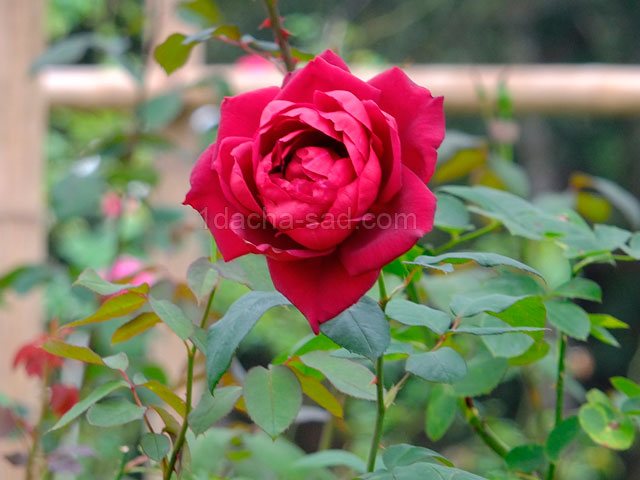

Not all roses can survive the winter, sometimes, even if all the rules are followed, it turns out that some plant has suffered. It's a shame what to do ... Of course, not all is lost, there is still a chance to go out and save the rose.Today we'll talk about when to open roses in spring after wintering, as well as how to save roses from decaying.
It would seem that she did everything according to the instructions: she covered her roses, the plants overwintered, in the spring I checked the shoots - green, but then they darkened and died ... What went wrong?
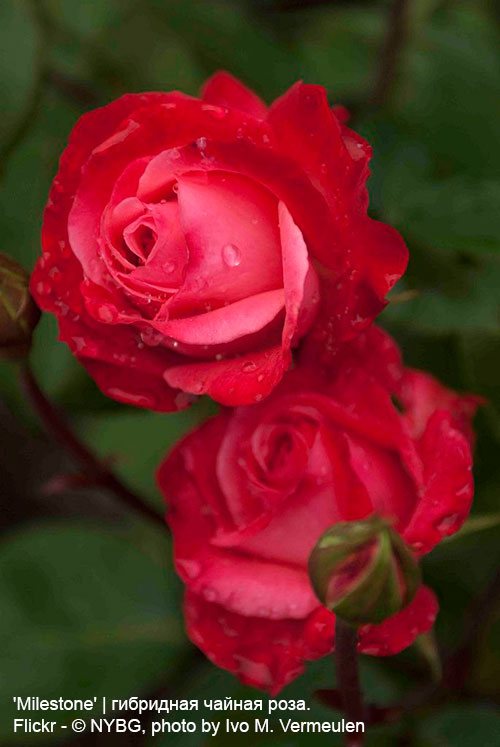

When to open roses in spring
In the spring, it is important not to miss the moment when you should remove the winter shelters from the rose bushes. The most important reason for the spring death of roses is damping. Winter is over, the roses have wintered, and then they are steamed. Try not to let this happen! The most optimal method of shelter is air-dry, consider this when sheltering your landings.
How to save roses from damping
Rose bushes are very sensitive and react to warming quite vividly. As soon as warm days are established, the plants come out of winter suspended animation: the buds begin to swell, although the roots in the ground have not yet woken up.


How to save roses from damping
I advise covering roses with non-woven fabric, agrofibre, which breathes and repels excess sunlight due to its white color. Excessive heat under such a canvas does not accumulate and this has a very positive effect on the condition of the shoots of the roses.
During the period of abundant melting of snow, make sure that melt water does not stagnate under the roses. Try to make drainage grooves, drain water from plantings. Roots don't need so much moisture. On particularly warm days, raise the edges of the shelter and provide ventilation for the shelter.
When to take cover off roses
When to remove cover from roses in spring
Everyone talks about how important it is to remove the shelters from the roses in time. But what does on time mean for your area? Focus on the condition of the soil. If it thawed on a shovel bayonet, that is, the roots are already free to receive food and come to life, you can remove the insulation.
If you open the roses early, you can freeze the buds of the plant, and if you are late in removing the shelters, then your roses can be worn out. However, this will not happen if you cover them with agrofibre.
Beautiful bush of repair roses
It is also wonderful because you can remove it layer by layer, leaving one layer in the final, which will be, like a shirt, just to keep the day warm on cool spring nights. And in the afternoon, it will protect the overwintered bark from sunburn at first. Another plus is protection against overdrying.
Roses on the balcony: if your roses hibernated on the balcony, or you grow them there, then you need to remove the shelter a little later, since cold winds can overcool the plants, because the roses are far from the ground. Therefore, balcony roses should remain covered longer. If your balcony is glazed, then you should open roses for the day, and cover them in the evening during periods of unstable temperatures.
Phased removal of shelters from roses
If your shelters are made in the traditional style, made of roofing material or thick paper, then in this case you will need to gradually remove the shelter from your roses.
In the first step, cut holes on both sides, let the outside air circulate freely inside. Let the plant get used to the ambient temperature for 24 hours.
At the second stage, we completely free the rosette from the dense shelter, but instead of it we will definitely do shading! Can be made from one layer of paper, fabric, or covering material.
After opening winter clothes, roses should be checked for dried shoots, broken and frozen branches. It is better to cut them out immediately with a pruner. We also remove the fallen leaves.
Rose grafting site treatment
After the ground has completely thawed, shake off excess soil from the bushes with roses if you spud them in the fall. Some huddle with foliage, straw and the like, all this should be removed from the shoots, carefully, trying not to damage the stem of the rose itself.
Every spring, the vaccination site, or the neck of the rose bush, must be thoroughly rinsed with a 1% solution of copper sulfate to prevent diseases and the development of fungal infections.
Instead of vitriol, you can still use a solution of potassium permanganate (dilute until bright pink). The procedure is best done with a stiff paint brush, I take it 2 cm wide.
Treatment of frostbites in roses
If you covered roses in autumn in damp weather, and then frost immediately hit, then frost cracks can be found on the trunks, in places where water accumulates. All this can be seen during the spring visual inspection of the shoots.
If the damage to the bark is small, then the wound can be healed, and if it is large and located close to the grafting area, then it is better to remove such a shoot. Always look according to the situation.
The crack should be treated with a 1% solution of copper sulfate, or, as already mentioned, with a bright pink solution of potassium permanganate, using a brush, and then cover the wound with garden varnish.
Be sure to cover all fresh cracks in the bark, this will help prevent the emergence of a focus of infection with fungal diseases. Less spores of fungi and mold - healthier your roses!
Removing mold on roses
If your shelter was very humid, then after removing it, you can find foci of mold that have affected the shoots. It's not so scary, everything can be washed off and dried.
Process with the same composition - one percent copper sulfate and a solution of potassium permanganate. For the future, so that mold does not appear, process the shoots in the fall, before sheltering with the same composition.
We treat damping in roses
Ground cover and climbing roses are most susceptible to damping. They most often hide on the ground, do not have access to air, but there is always excess moisture. hence the frequent lesions of infectious burns from excess moisture. It's like a baby's diaper rash. And it must be treated!
Such diaper rash can be identified by the reddish spots that ring the shoot. They can be dark in the center, you can't go wrong once you see them. As a rule, areas with diaper rash are cut out if they are large.
And if the shoots are slightly affected and there is a chance to save the branch, then the lesion is cleaned to healthy wood, and then covered with garden var.
Spring pruning of roses
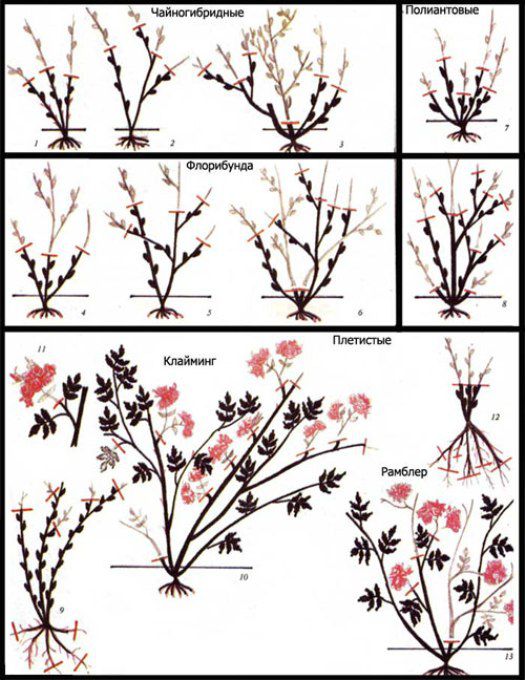

Rose pruning scheme
After removing all the shelters, when truly spring weather has already established, the rose bushes are pruned according to the rules, according to varieties. After pruning, the plants are sprayed with a 1% solution of copper sulfate and plentifully, under the root, watered with warm water to start the root system. Also, roses should be fed and spud.
Video - caring for roses after winter
Additionally, I suggest watching a video clip, which tells and shows what activities should be done with roses after winter.
Opening roses after wintering is a responsible procedure that requires certain knowledge and skills. In different regions of the country, roses should be opened at different times - earlier in the south and later in Siberia. Gardeners should also know the peculiarities of caring for ornamental shrubs after removing the shelter.
All this useful information is collected in the article - we will tell you when to open roses after winter shelters, how exactly this should be done, how to care for plants.
Sanitary inspection of roses
When examining a flower garden in spring, it is important not to miss damage to the bark - frost. They appear on the plant when moisture gets inside the microcracks in the bark, and then freezes, tearing the plant tissue. Such wounds are treated by covering them with garden varnish or wax, gluing with a plaster or electrical tape.
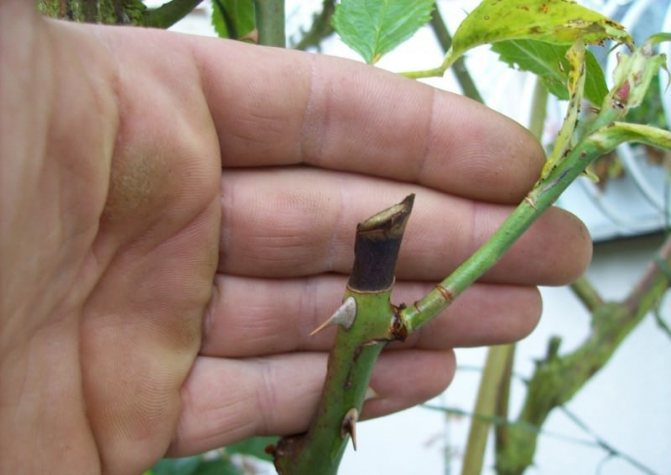

If overwintered bushes are covered with a layer of mold, this indicates late opening of bushes or improper shelter organization.If the mold damage is not strong, the rose can be saved by washing the bush with a fungicide solution (Fitosporin, copper sulfate, potassium permanganate).
Ripe shoots of roses can be recognized by the reddish spots on the bark, ringing the branch. Such shoots are cut out, they cannot be saved.
When to open


Ignorance of the rules for opening roses after wintering can lead not only to disease, but also to the death of plants. Problems such as damping or night frosts can ruin an entire carefully cultivated population in the bud. That is why every gardener who has a queen of flowers on his site is obliged to know all the nuances of removing a winter shelter.
If you open the bushes early, when the soil has not yet warmed up enough, and the weather has not stabilized, they are likely to freeze through. This will lead to a lack of flowering roses this season, and possibly to the death of plants. This is due to the fact that the buds begin to wake up before even the root system, and if frost grabs them, the buds will die.
Important: rose buds die if the temperature drops to -7-10 degrees.
But it is not worth waiting for a long time for stable warm weather. Under the shelter during the daytime, the roses are hot - the sun can warm up very intensely in the spring, while the roots of the plants are still sleeping or are just beginning to wake up.
Due to the fact that the above-ground parts of the bush are actively evaporating moisture under the shelter, they vytryut, the branches begin to dampen. This can also lead to problems, including the death of plants. In addition, if you do not open the bushes for a long time, under the influence of heat and moisture, spores of fungi and mold begin to actively multiply.
In view of the above, gardeners are advised to free rose bushes from winter covering material with active snow melting (it is important that the snow melts in the shade). It is necessary to open the bushes in stages, at a consistently warm temperature and be sure to take into account the peculiarities of the local climate.
So, in some southern regions, roses are not covered at all, and if they are, then the winter “blanket” is removed at the beginning of March. In the middle lane, roses can be freed from shelters from mid-March to mid-April. Well, in the north and in Siberia, the opening of the bushes can be delayed until mid-May.
To summarize: the main signal for the removal of shelters is the melting of snow. At the time of removal, the weather should already be steadily warm with minor night frosts. In depth, the soil by that time should thaw 15-20 cm.
Transfer and landing
It often happens that roses grow very much and begin to interfere with the passage (for example, if you planted them near a path or a house). At the same time, due to overgrowth, the shrub begins to lack nutrition, as a result, it blooms poorly or even dies. And all this is because you initially made a mistake when choosing a place for planting it, or simply planted it at the wrong depth (which is why the roses did not take root and began to die).
Of course, there are other, so to speak, external reasons. For example, you urgently need to free up space for a building or you decide to create a beautiful composition elsewhere.
Well, here are the reasons for you to transplant roses to a new location.
Note! The site has a detailed material about how to properly transplant roses in spring and autumn.
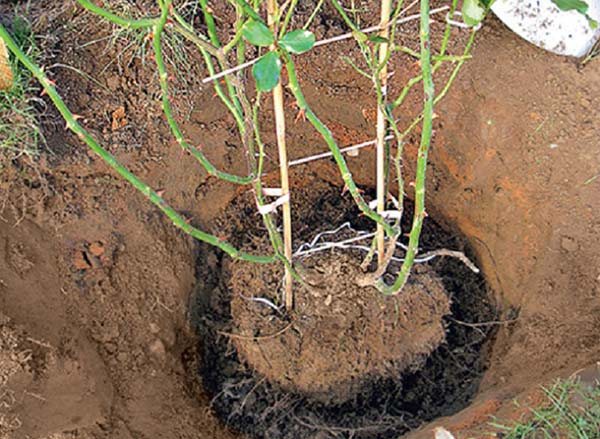

Cutting roses
However, if you want multiply roses in this way (by dividing the bush during transplantation), then they will be much more effective cuttings in autumn.
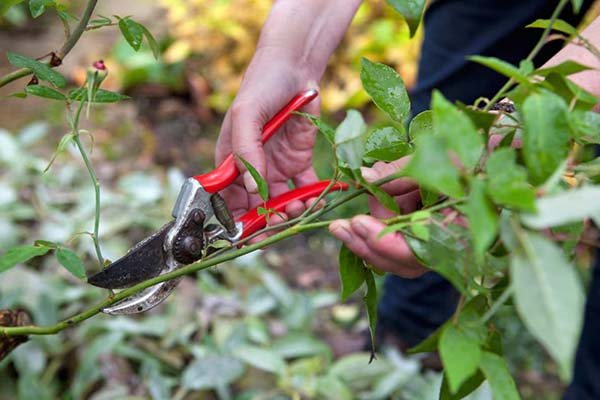

How to root a rose from a bouquet
If you were presented with a bouquet of roses for March 8 or another spring holiday, then you can save them and plant them in your garden.
Note! Detailed information about rooting a rose from a presented bouquet set out in this detailed article.


How to take cover
Let's take a step-by-step look at the process of removing winter shelters from roses.
The first stage is preparatory
On average, preparation for the removal of shelters begins from the beginning of the calendar spring. The first step is to throw snow on top of the shelters to avoid damping off the plants. It is important that the layer is fairly thick. Around the bushes themselves, the snow and on the shelters must be compacted - trampled down. The denser the snow, the longer it will melt. In addition, trampling the snow cover to prevent mice from chewing on bushes.
It is also important to ensure the drainage of melt water from the rose garden so that the bushes do not "drown". Some gardeners are laying ash paths between bushes, thus achieving more active snow melting. It is also necessary to lay a "drainage system" - to dig grooves in the snow, along which water from the bushes will go away.
All these preparatory activities are carried out in the spring for about a month - that is, on average, until the end of March.
The second stage is airing
By the end of March, snow in most regions is actively melting, including shaded areas. If in the daytime the temperature is already steadily rising above zero, you can first print out the shelters and leave the bushes to ventilate without completely removing the “blanket”. Leave small holes so that the roses do not freeze out of habit.
Important: spend the first airing at noon, when the sun's rays are warming up most actively.
The third stage is the direct removal of shelters
It should be borne in mind that rose bushes should gradually get used to the decrease in external temperature. After wintering in greenhouse conditions, gas exchange is still inactive, other important processes have not returned to normal either. Adaptation involves the gradual habituation of the bushes to the environment: otherwise, the branches may dry out and die. The opening should be done gradually - on average, it takes three days to fully open the roses. Open the bushes by one third every day - this way the plants adapt optimally.
Tip: It is best to open the bushes or in cloudy weather so that the branches do not get sunburn.
So that the sun's rays do not damage the bushes, shade the latter with spruce branches. You can put spruce branches either directly on top of the bushes, or (if it is tall), stick it into the ground on the south side of the bushes. It is also necessary to dig out the soil from the stems, which the bushes were covered with before wintering. This measure will protect the roses from damping.
The root collar of the bush, the place where the vaccination was made, requires special treatment. It must also be opened, freed from the soil, wiped gently with a non-woven fiber or rag, rinsed with a universal solution of vitriol.
Until the sap flow has begun and active vegetation processes have not started, roses should be cut. Remove all shoots frozen over the winter, remove dried branches, rotten, diseased ones. Thus, the bushes will be maximally prepared for the new season and will soon please with abundant flowering.
Varieties
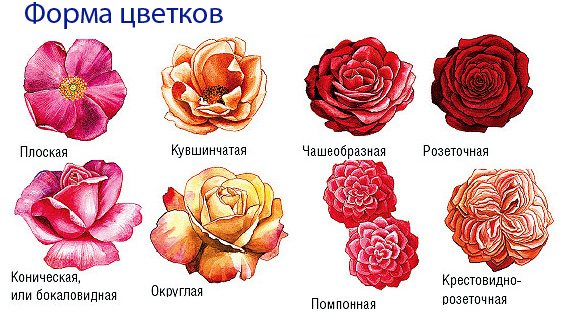

Variety of flower and petal shapes.
Small clusters of identical roses give a sophisticated decorative effect. They delight with buds of all colors of their double or simple petals.
Tall and medium
- Half-meter bushes of tea varieties with large double inflorescences (up to 10 per branch) are fragrant from June to winter. Then we cover them together with the root collar.
- We can grow spectacular two-meter giants with our own hands near the hedge, near the wall of the house or in the center of the flower bed. These are the roses of Canadian breeders. For the winter we will bend them half a meter from the ground and cover them.
Problems and how to fix them
After removing the winter shelters from the roses, some problems are likely to arise: the detection of branches damaged by frost, mold, and other defects that require elimination. We will learn how to cope with the problems that arise after the wintering of roses and how best to prepare the plants for the upcoming growing season.
Pruning
This procedure is carried out when all the shelters have already been completely removed. Rose bushes are cut according to their types and varieties, after which they are sprayed with vitriol solution. It is important to prune before the buds open. Use only a sharply sharpened and disinfected pruner so as not to injure the roses again and protect them from infections.
Do not leave stumps after cutting - you must remove branches completely to the base. The slices themselves should go at an angle of 45 degrees, while at the same time it is necessary to distance from the lower healthy kidney at least 5 mm. Old branches that are more than four years old are advised by gardeners to be removed, even if they are still outwardly and healthy. They will not bloom well anyway.
In addition, after pruning, immediately pour the bushes abundantly under the root with warm water - this activates their root system.
Treatment against pests and diseases
Roses are delicate plants, therefore they are susceptible to various diseases, as well as damage by harmful insects. To protect the bushes from diseases, they should be treated with suitable preparations. After removing the shelter, this must be done no later than in a week. The procedure will help to avoid further infection of roses with fungal and other infectious diseases. What drug is used: most often it is a solution of copper sulfate (1%) or a solution (vigorous) of potassium permanganate.
It is necessary to treat the entire bush completely from pests and infections, including the grafting sites - they are the most vulnerable. If soil is stuck on the stems, remove it gently with a rag, and only therefore spray it.
Mold, burns and frost cracks
A day after the fungicidal treatment, it was time to inspect the bushes for the following defects:
- mold;
- infectious burns;
- frostbite.
Getting rid of mold is quite simple: it should be thoroughly cleaned, and then sprayed with a soapy copper solution. So that later mold does not appear on the roses, before covering the bushes for winter, treat the branches with a 1% solution of vitriol or potassium permanganate.
Detecting frost cracks and burns is a bigger problem. If these defects are not eliminated, they will turn into a real breeding ground for infection and tissue decay. Frost cracks appear, and then infectious burns due to the fact that water gets into the bark of branches and then freezes in winter: as a result, plant tissues are damaged. These defects require radical measures, especially if they are located at the very base of the bush: sometimes you have to cut the entire bush completely under the root.
However, when the frost holes and burns are located closer to the top, you can try not to cut off the branch, but try to cure it. But in any case, the damaged tissue must be removed - they are already dead, they can begin to rot.
They are cut with a sterilized knife or scalpel. The cut site must be covered with garlic gruel for disinfection or plantain. You can also cover the cuts with garden pitch. Above, you should apply a fixer in the form of a waterproof film and electrical tape (scotch tape).
Most often, climbing and ground cover roses have to be treated for damping. The peculiarities of their growth imply direct contact of the branches in the ground or other surfaces, which aggravates the situation. The air reaches the branches creeping on the ground very weakly, so infections, mold and moisture multiply quickly. Areas with damping off are identified by reddish spots located in rings around the shoots. The center of the spots can be dark.
If the roses are covered with agrofibre, the problem of damping occurs much less often, since the white color of the material repels the sun's rays. It does not get too hot in this way under the shelter, and the shoots of the rose do not vomit.
It is also important to ensure that melt water does not accumulate under the shelter. As mentioned above, take action: dig grooves, drain water with all your might.If there are warm days when the sun is hot, ventilate the bushes, opening the shelter a little from the ends.
As you can see, in order to open roses after a winter shelter, knowledge of many nuances and subtleties is necessary: if the latter are observed, the plants will be healthy, strong, delightful with delicious flowering and aroma. The tips from the article will definitely come in handy - with their help you will provide your roses with the necessary care and attention.
Rosaries
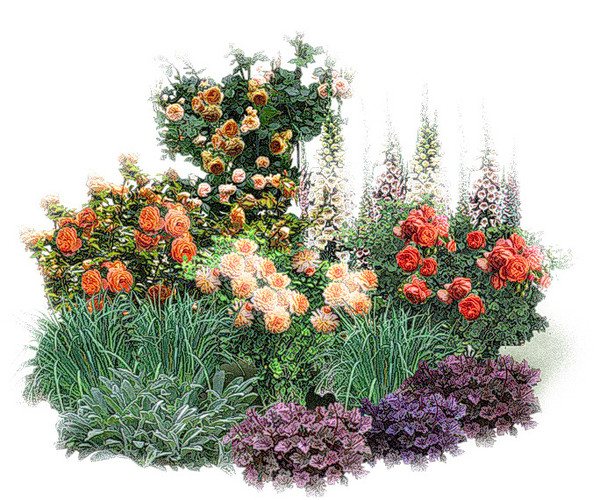

Traditional rosary plan
We will accentuate the diversity of roses with a simple splash of evergreen perennials. Refined conifers, openwork ferns will skillfully create a background for regal buds. Their price tag is negligible in comparison to such a picturesque winning landscape.
Traditional rose garden
- The front part is covered with ground cover miniature plants, forming a fragrant colorful carpet.
- We will populate the middle line with bushes of a colorful floribunda palette or hybrid tea with a height of 90 - 130 cm.
- Tall climbing pink trees are solo plants: they should also stand out with the brightness of the petals. For stability, 10 cm from the trunk on the windy side, dig in a stake and tie high pink lashes to it.
- The elastic attachment for the garter of plants will simplify the care of the crown.
Note! Electrically heated conservatory rose gardens are great even in cold weather, and renting a diesel generator for a summer residence is profitable because it is not expensive.
- The curtains of the rose garden are formed by a curling rose, which on the supports will reach 5 meters. A variety of this beauty is climbing, and she herself is well kept on a support.
Hedge
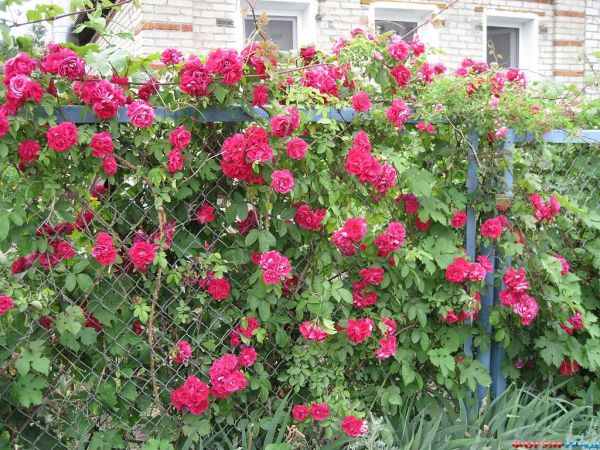

There is no more beautiful hedge of climbing roses.
- Rose bushes picturesquely frame the site or its individual zones: a cozy utility yard from a lovely island for relaxation. One-row "border" in the garden will be laid by meter-long bushes, the distance between which is up to half a meter.
- With a multi-row two- or three-tiered fence, we will plant low plants in front and further in a checkerboard pattern, but strictly in growth to the last one and a half meter giants.
- For a hedge at a summer cottage, 2-year-old bushes are good.
Advice! The last row should not be closer than half a meter to the main fence or wall, so that free ventilation of the plants is preserved, suppressing mold and mildew.
Inspection and pruning of bushes
After wintering, healthy shoots should remain green, but the main hazards, such as mold, frost breaks - longitudinal ruptures of the bark, as well as infectious burns, hide at the base of the bush.
In spring, roses can have a lot of frozen, diseased and broken branches, while frozen shoots must be cut off until the middle of the stem is white, and moldy ones are removed completely.
Cutting branches is half a centimeter higher than an already developed bud, which grows on the outside of the bush, and not on the inside.
Cutting higher can cause wood to die off. You also need to cut off all the shoots growing inside the bush. Try to shape the crown so that the center of the bush remains empty.
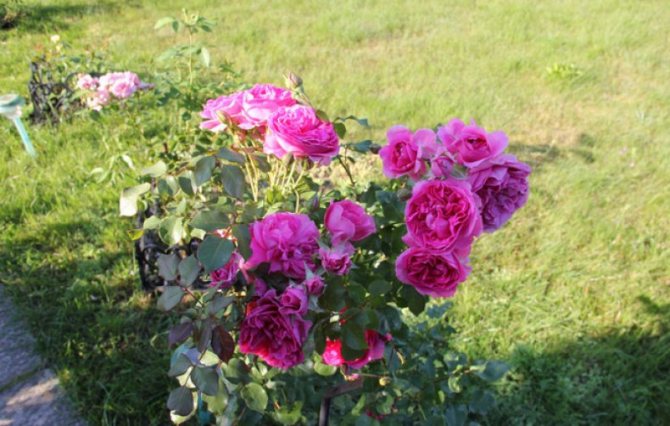

1. Preparation for opening
On the 10th of March, when the threat of severe frosts has passed and a positive temperature is established, I go to the site and throw snow from the shelters. If in frosty winter snow is the main friend and savior, then in spring its wet layer on the rose garden is the main enemy.
It interferes with the flow of air into the shelter and the drying of the material. Until the snow melts, high humidity remains inside, in which putrefactive bacteria begin their dark work at positive temperatures, which in 2-3 weeks can destroy an adult, well overwintered bush.
BUT is it necessary to remove snow from shelters? It all depends on the location of the site. If it is on the sunny side and the snow melts quickly, then you shouldn't do extra work. In Moscow, for example, snow melts in a week with a sharp warming.My plot is on the outskirts of the forest and the snow lays there 2-3 weeks longer, so I have to clean it off. I noticed: if the roses are not removed in time from this fur coat, then the attacks are always an order of magnitude more. If you have air-dry shelters with a film, then on the very first warm days you should open their ends and remove the film from above as soon as possible. In 2011, when the “freezing rain” covered the shelters with a shell, prudent rose growers destroyed it, and the results of wintering were the most optimistic for them, while those whose roses remained under the ice all spring were depressing. If it's hard for you to peel off the snow, then sprinkle it with ash well, and it will melt twice as fast.
At what temperature can you open


When the soil has melted to a depth of 20-30 centimeters, the protective cover can be removed.
Attention! It is forbidden to remove the shelter in the presence of snow!
Temperature indicators at night should not fall below -2 degrees. When removing the shelter, the roses are first covered with foil or spunbond.
Daily temperature readings should be kept at at least 10-15 degrees.
When the air warms up, the film is removed and the rose can grow without additional protection from the sun and cold.
Features of cropping of different types
There are many types of roses, and if you want them to be equally beautiful and healthy throughout your life, take a special approach to each of them:
- in miniature roses, after the usual pruning, all other shoots are shortened by half;
- on climbing roses, you need to leave the strongest shoots in the amount of 6 pieces, and when caring for the bush, shorten them a little;
- for boles (roses grafted onto a high trunk), all shoots are cut and lashes are left about 20 cm long;
- on large and multi-flowered roses, weak shoots are cut above 5-6 buds, strong ones can be left longer;
- Rose hips and ground cover roses can be trimmed just a little, just to give them an attractive look and beautiful shape.
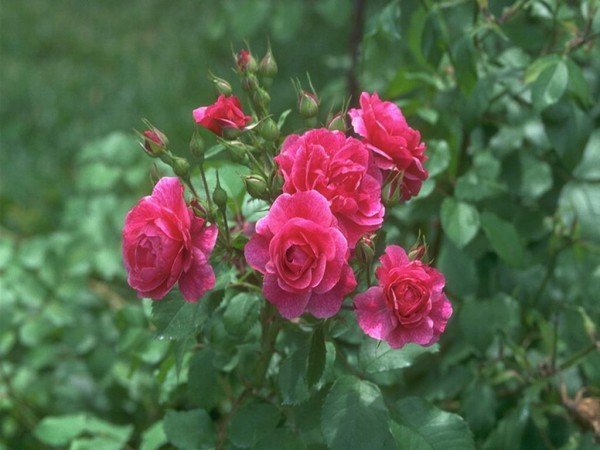

There are different pruning methods for each type of rose.


If you planted roses in the spring, prune them immediately after planting. The branches should be shortened above 6-8 buds, and the stem shoots should be shortened above the third. Roses planted in the fall are pruned for the first time in the spring of next year. Do not forget to lubricate the cuts with garden varnish or oil paint.
To fertilize roses, it is very important to use products containing potassium, nitrogen, magnesium and phosphorus. It will not be difficult to buy such a product, in specialized stores the choice is very large, so you can easily choose a fertilizer suitable for your roses in terms of price and quality, paying attention to the components.
You need to feed roses with these fertilizers 2 times a year: in spring, when the plant enters the growth phase, and in summer, after the first flowering has departed and strength is needed for the second. Spread 28 grams of fertilizer evenly on the surface of the soil around the bush and work the soil with a hoe.


Top dressing of rose bushes is carried out only on wet soil
- If you are raising chickens, then you do not need to worry about fertilizers at all: poultry will provide them to the fullest. After cleaning the chicken coop, spread fresh chicken droppings mixed with bedding around the circumference of the bush.
- Try not to place the droppings directly on the roots of the plant, but to scatter them on the surface of the soil around the rose. This fertilizer is concentrated enough and can damage the root system.
- After the pruning and the first feeding are done, be sure to mulch the roses. To do this, scatter garden compost evenly around each bush, and cover with a layer of wood chips or sawdust on top.
- Mulching materials should not cover the base of the plant stem, so as not to restrict the access of heat and moisture to the roots.
- Correct mulching will ensure the preservation of moisture, heat and minerals in the soil, protect the roots, and therefore improve the appearance of the rose bush.
Continuing the spring care measures, we proceed to the sanitary pruning of the bushes. General rules:
- It is necessary to spend every spring before bud break.
- Be sure to use a sharp secateurs.
- Cutting off the branches completely, you can not leave the hemp, remove them to the very base - on the "ring".
- The branches are cut at an angle of 45 degrees, about 5 mm away from the healthy outer bud. It is necessary to choose exactly the one that grows outward, so that there is no thickening.
- Forming a bush, leave about 5 healthy, not old branches, the rest are removed on the "ring".
Sanitary pruning of roses in the future is the same as for other shrubs:
- All dry and damaged branches are cut out to healthy wood, as well as those growing inside the bush.
- Old branches (more than 4 years old) are removed.
- Places of cut of large branches must be covered with garden varnish or brilliant green to avoid infection.
- The pruner must be disinfected after each bush.
- Wild shoots appearing below the grafting site are removed.
- Hilling bushes.
More about caring for the lawn after winter Spring every day more and more confidently comes into its own. Everything in the garden wakes up after a winter sleep and demands our ...
Fertilizer granules are loosened with the soil near the bushes and shed well. Or the fertilizers are preliminarily dissolved in water.
At this time of the year, the heat is unstable, the ground is not warmed up enough, and the roots in cold soil do not absorb nitrogen well. Therefore, before fertilizing, water the soil around the bushes well with warm water. Having retreated 15 cm from the trunk, we apply nitrogen mineral fertilizers (ammonium nitrate, Kemira spring or others with a high nitrogen content).
Foliar dressing with calcium nitrate is effective for roses. Not only the bush is sprayed, but also the soil around it.
In order for the feeding of flowers in spring to be complete, a little organic matter should be added. A week after mineral dressing, add about half a bucket of heavily rotted manure under each bush, slightly burying it into the soil, pour water well on top. You can use a solution of rotted mullein or low concentration chicken droppings (1:10 and 1:20).
Frequent rains can wash out all nutrients from the soil. In this case, after two weeks, a similar fertilizing of the rose is carried out again.
All these dressings are carried out for bushes over two years old. Young seedlings are not fertilized, provided that you have planted them in high-quality nutritious soil.
Remember! It is better to under-feed these flowers rather than overdo it.
Competent spring care for rose bushes necessarily includes high-quality pruning:
- around the middle of April, it is necessary to remove frostbitten and broken shoots from plants;
- cutting off shoots to live buds, an extremely symmetrical and beautiful rose bush should be formed;
- almost all varieties of hybrid tea roses bloom on the growths of the current year, therefore, strong pruning is performed with the removal of old shoots;
- in order to get the most abundant flowering of floribunda, it is necessary to carry out combined pruning in the first year by 3-5 buds, and in subsequent years by a third;
- shoots of floribunda varieties that are more than three years old must be cut off completely;
- when pruning large-flowered climbing roses blooming on last year's growth, only shoots older than five years are removed;
- rambler pruning is done in a cut after flowering, by the "ring" method, with the removal of all old or weak shoots;
- when forming a shrub, young branches are cut off by one third of the length with the obligatory removal of shoots thickening the bush;
- for standard rose varieties, it is preferable to use light pruning and removal of all shoots frozen during the winter period to a healthy, viable bud.
Pruning must be done with an extremely sharp and clean, pre-disinfected garden tool.It is cut over the kidney, facing outward, at a distance of a centimeter. The standard tilt angle can be approximately 45 °. After pruning, all cuts must be lubricated with garden varnish, which will prevent the penetration of infection.
After the spring pruning is completed, it is necessary to feed the rose bushes with fertilizers with a sufficiently high nitrogen content. Most often, during this period, feeding is carried out with "Aquarin", "Kemiroi-universal" or "Aquamix". Liquid fertilizers are best absorbed at the rate of three to four liters of solution per plant. When applying dry fertilizers, one should be guided by a consumption of 35-40 g per square meter.
We suggest that you familiarize yourself with: Soil temperature for planting potatoes: at what level can you plant?
Garter
Basically, a garter in the spring is necessary for climbing (curly) roses. But in addition to this type, you can create a support, if necessary, for colors of other types. The spring garter will help in the future to form a beautiful shrub, prevent thickening, it will become easier to care for the shrub and the care will be of better quality, and flowering will be possible along the entire height of the shrub.


After installing the support, the bush should be tied up with soft garden wire. Subsequently, when the plants grow gradually, it is necessary to raise the shoots and tie the branches to the support.
It is not difficult to take care of roses, even a novice florist will cope with the task. It is recommended not to postpone the events and to conduct them efficiently. With spring care, you get a beautiful flower garden that will delight your eyes and your heart.
We carry out trimming
In the early spring period, not only decorative crops, but also plant parasites, as well as pathogens of various rose diseases, wake up after winter rest. The most suitable time for preventive treatment of rose bushes is considered to be the period when the plant enters the phase of active growth of the vegetative mass.
In the spring, after removing the winter shelter, it is necessary to revise the ornamental plantings and carefully examine the rose bushes for damage by pathogenic microflora or damage by pests. During this period, the use of special chemicals shows maximum efficiency.
Of course, you want your roses to grow lush, blooming and healthy. So get ready: you have to put in a lot of effort. Care is required throughout the year, but the spring, the very first treatment of roses is especially important, the further growth and development of flowers depends on it. Care includes steps such as:
- competent watering;
- correct feeding;
- pruning;
- disease prevention.
In March, you need to remove winter shelters from the bushes, install supports, carry out a garter and spud the plants. In April, spray the bushes and the soil around them for prophylaxis, do top dressing. This period is good for breeding roses and planting new bushes. In May - preventive spraying again, new top dressing and pruning of rose bushes.


The treatment of rose bushes must be done before the buds grow.
In fact, the beginning of the period for caring for roses depends on the climatic conditions in the region where you live. In warmer latitudes, processing begins at the end of winter. The main thing is for the snow to completely melt and warm, relatively dry weather set in. The primary treatment must be completed by the time the active growing season begins, that is, the buds of the plant will grow.
The best time for the main pruning of roses is not autumn, as many believe, but spring. this way roses will winter much more successfully. There are general rules for pruning ornamental and fruit shrubs, which should be followed in the process of pruning roses:
- remove branches that have dried up or were damaged during the winter;
- examine the bush and find a couple of the strongest branches on which healthy buds are visible;
- shorten them to a strong bud;
- remove all shoots that grow inside the bush and branches that obviously will not bloom, but will only take away the necessary nutrients from the plant;
- shape the crown of the bush so that its center is open.
There are several factors you need to be guided by when pruning roses. First of all, this is the climate: in cold regions, the plant does not have time to grow strongly over the summer. The type and variety of the rose also affects the length of the trim, it is also important how high the rose you want and where it was planted - in the foreground or background.


Rose pruning tools must be very sharp
Here are a few tips to help you get the job done right:
- cut the branches a couple of millimeters above the buds;
- make an oblique cut directed in the same direction as the kidney;
- pruning tools, such as pruning shears, must be sharpened;
- if, after cutting off the shoot, you did not find white healthy wood, cut it again, until healthy tissue appears;
- finally, the bush is formed after the shoots have grown by about 5 cm;
- it happens that after pruning several shoots grow from one bud, they need to be removed, leaving only one;
- after the pruning is finished, sprinkle the bush with a solution of copper sulfate;
- Cover roses at night with foil if there is a danger of frost.
Once the pruning is complete, set up the props and tie the roses. If you use permanent, strong enough supports, check their safety and integrity: it is undesirable for them to be damaged, otherwise they may not withstand the weight of the bush over time. Self-fixing green garden wire is very convenient for a garter.
A few days after you have carried out the first spring treatment of roses, when the greenery begins its active growth, spray the plant with special preparations. The hardware store has a large selection of such products. Check with the seller in which preparation contains both a fungicide and an insecticide - this combination is optimal for the plant, moreover, it will save you money and time for processing.


Black spots on the leaves of roses are a sign of a disease.
The universal remedy will protect your roses from aphids, powdery mildew, rose rust and black spots. Spraying should be done in the evening, in calm and dry weather. Manufacturers recommend spraying plants every 2 weeks from the start of the active growth phase. But experience shows that two sprays are enough: the first - during the early spring treatment, the second - in the summer, after the roses have faded once.
If there are rosehip varieties among your roses, and you plan to eat their fruits, then you should not use synthetic insecticides and pesticides. In this case, you will need natural controls such as plant-type fungicides and insects. For example, a ladybug and her larvae can help you get rid of aphids.
Types of manipulations
Pruning can be strong, medium or low. Climbing and park roses lend themselves to poor pruning. To do this, cut off the upper part of the shoot, leaving 10 buds, of which short shoots will appear in the future. They will begin to bloom in June. Such shoots should not be pruned.
Basically, roses are moderately pruned, when only seven buds remain on the shoots. Young twigs will be long, but they will begin to bloom a little later than after a weak pinching.
If the pink shrubs are cut tightly, then flowering will begin after a month. Only three buds must be left on the shoots, which will later grow into strong branches.
Note! Climbing roses are not recommended for heavy pruning, as they may not bloom. However, old bushes can be cut off.Thus, they can be refreshed and rejuvenated.
Experienced gardeners are advised to adhere to the following rules regarding pruning different types of roses:
- For polyanthus, teas, and floribundas, you can use medium to high pruning.
- Miniature species (for example, curbs, cordana) can only be thinned and shortened by half the shoots.
- Remaining plants should have at least six buds after pruning. Due to this, the culture will bloom profusely in the current season, and next year it will bring an excellent growth of shoots.
- Climbing, park and scrubs are extremely light pruning. However, it should be remembered here that in multi-flowering climbing plants, it is necessary to pinch only the lateral branches and in a small amount, and the main shoots should not be touched. It is generally undesirable to expose once flowering climbing crops to spring pruning.
- A hundred-petal rose bush should not be cut off at all for the first couple of years after planting. After that, in the autumn period, it is necessary to carry out a formative pinching, leaving fifteen strong shoots of different ages and removing weakened and thickened stems, as well as those that grow inside the plant. Flowering shoots at the end of the flowering period must be shortened by half.
- Standard varieties of rose bush need only be thinned out or lightly trimmed.
- Ground cover plant species lend themselves only to rejuvenating and sanitary pruning.
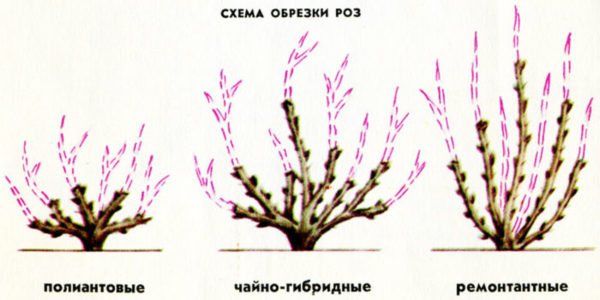

In principle, there is nothing difficult in pinching different types of roses. The main thing is to choose the right type of pruning so that the plant can bloom and grow normally in the future.
What cover roses
Roses can be covered with spruce branches, fresh sawdust, pine needles, peat, dry leaves, boxes, foil, cut off with large plastic bottles.
Roses can not be used to hide: thick film, old hardwood sawdust, moss, straw, hay, manure. Increased dampness leads to root rot and death.
The covering layer must be thin, otherwise the bush will start to squeak. Such a shelter will allow the plant to breathe and protect it from the cold and bright sun.
Soil mulching
Mulching the land around the bush is also on the list of important steps in plant care. Mulch (preferably garden compost) is spread evenly on free soil around the bush after pruning and fertilizing (Figure 7).
Note: On average, a bucket of compost is sufficient for one bush. Sprinkle it on top with dry sawdust.
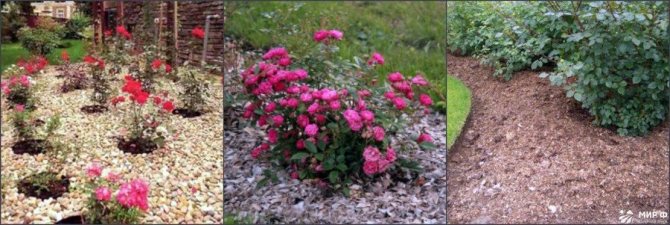

Figure 7. Options for mulching bushes
Mulching allows you to retain moisture and nutrients in the soil, and also slows down the growth of weeds. But it should be borne in mind that the mulch should be at some distance from the trunk. If this is not the case, moisture and heat will not fully reach the roots and the culture will slow down growth.
Trick 6. Herbal "shower"
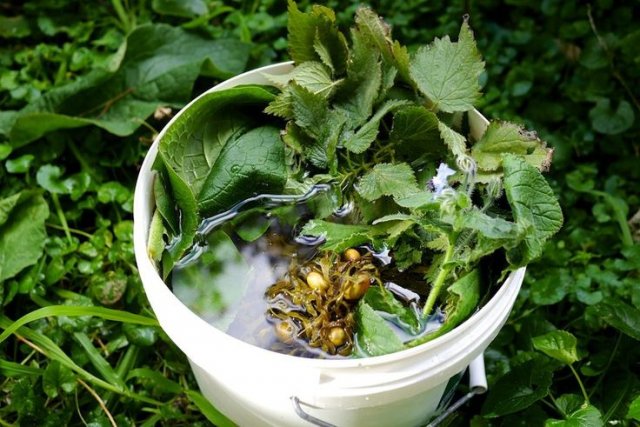

I decided on nettles and other herbs for soaking. Now, before leaving the dacha, I soak a bucket of medicinal herbs in the sun, when I arrive, I immediately filter it, and spread it into the sprayer. And to be honest, what's the difference, sprinkle 5 pieces, and breed everything for them, or 400 pieces? The main thing is to have a cool sprayer that sprays finely and with strong pressure.
Spring planting of new bushes
April or May is a good time to plant new rose bushes. For this, the soil must be warmed up to at least 10 degrees. We choose a place in openwork penumbra or with shading at noon. Roses need to be planted sparsely in order to easily care for them and cover them for the winter.
The standard dimensions of the planting pit are about 50x50x50 cm. A mixture of soil with well-rotted organic matter is laid on the bottom. To avoid burns, mineral fertilizers must not be placed under the root!
In order for the root system to develop actively, the roots are preliminarily pruned to living healthy tissue and soaked in water with "Kornevin" for about 2 hours.Shoots are also pruned, leaving 3 healthy buds on them.
Carefully clean the wax around the grafting, when planting we deepen it by 3-7 cm. We well compact the soil around the seedling, water it. Then we spill heavily with our head and leave it like that for two to three weeks. After this time, the bush takes root, we carefully remove the hilling, you can wash it off with a stream of water. Further care for young seedlings is the usual care of the rose. Find out more about the autumn planting of the queen of flowers here.
Successful planting of roses in spring and care measures are the key to the future healthy beauty of your rose garden. And when the queen-roses bloom in all their splendor, no one remains indifferent. All the difficulties and worries about them suddenly seem so insignificant. And everything about caring for roses in the autumn is written here.
Immediately after planting, pink seedlings should be provided with high-quality irrigation measures with water heated in the sun. Watering is carried out in the evening or morning hours. When watering, it is necessary to direct the stream of water directly under the root of the plant. Do not allow the blurring of the root system and the ingress of drops on the aerial part of the plant.
After watering, it is recommended to carry out a shallow and very careful loosening of the soil until the onset of a significant cold snap, after which it is advisable to compact the soil over the root system of the rose. If the planting of seedlings is carried out in the spring, then pruning is done in advance. When planting in autumn, after planting, pruning is not recommended.
Spring is a great time to replenish your pink collection with new pieces. Therefore, a few tips will come in handy.
- Roses like well-lit, warm, open areas without drafts, with light soil, such as suspension or loam. It is not recommended to grow roses in damp, heavy soil, in shaded areas, under trees or on the north side.
- First, carefully dig up the soil where you plan to plant. Remove all weeds, apply fertilizer, and after 2 weeks you can plant the bushes.
- The bushes also need to be prepared in advance. Remove the damaged roots, and shorten the healthy ones to 20-25 cm. Immerse the rhizomes in a solution of an antifungal agent and stand for about a day. You can keep the roots in a clay solution for several hours before planting.
- Pour fertile soil with a slide at the bottom of the planting pit. Spread the roots of the roses neatly over it. Fill the hole with earth, tamp and water the bush.
- At the base of the bush, the earth must be poured with a slide, 20 cm high.This will help protect the roots from freezing in winter.
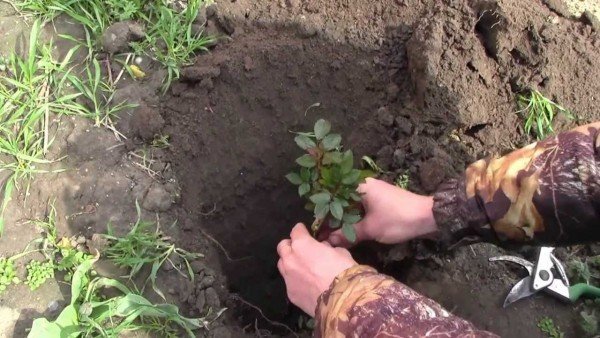

Correct planting of a rose bush



